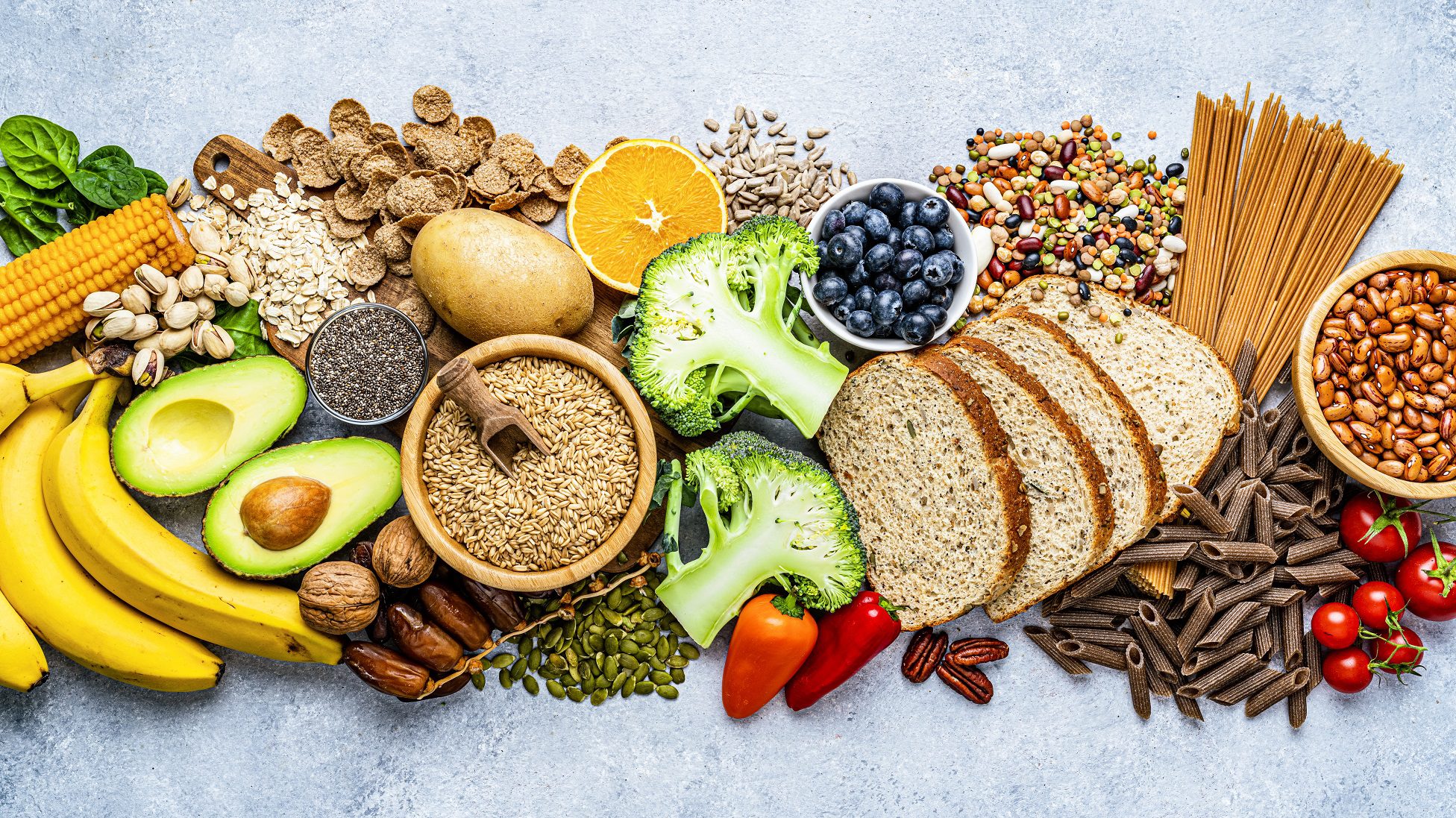Common changes in cognition typically include slower word and name recall, difficulty multitasking, and mild decreases in attention span, say researchers at the University of California, San Francisco Memory and Aging Center.2 These natural age-related changes happen because certain parts of the brain, especially the frontal cortex, shrink over time. In addition, connectivity between neurons also becomes less effective, blood flow often decreases, and inflammation may increase.3 But the rate at which these changes happen isn’t necessarily the same for everyone.
The good news is that there’s a lot you can do to protect your brain and your cognitive abilities. And it’s never too early to start!
Feed Your Brain
New research in the Annals of Neurology shows that what you eat can impact how fast you age as well as your risk of developing dementia. During the study, researchers from Columbia University analyzed data from the second generation of the famous Framingham Heart Study. They found that people who ate a diet similar to the Mediterranean-DASH Intervention for Neurodegenerative Delay Diet, also known as the MIND diet, aged more slowly and had 27 percent less risk of developing dementia and 57 percent lower odds of a premature death.4
So what is this brain-centric way of eating? The MIND diet is a plant-forward pattern of eating that limits the intake of foods high in saturated fat and sugar. While it borrows from both the Mediterranean and DASH diets, the MIND diet also focuses heavily on foods that support brain health. These include vegetables, with an emphasis on green leafy veggies, beans, berries, fish, olive oil, poultry, nuts, whole grains, and red wine. It also allows for small amounts of red meat, butter, cheese, and sweets.5
While this particular study involved 923 seniors, the sooner you bail on unhealthy eating habits in favor of nutrient-rich, minimally-processed foods, the better it will be for your future brain. But to make sure your new way of eating sticks for the long haul, make changes slowly. For instance, try switching from white rice to brown rice. A couple of weeks later, buy and prepare a couple of vegetables you’ve never tried. Continue stacking healthy dietary habits until you’re eating a MIND diet at least 80 percent of the time.
Work It Out
It’s undeniable that regular exercise is good for your body. But research has found it’s also good for your mind. A recent clinical trial published in Scientific Reports showed significant improvements in memory among middle-aged men who had exercised regularly for 20+ years.6
Other studies show that exercise—especially aerobic exercise—increases oxygen and blood flow, reduces inflammation, and enhances connectivity between neurons in the brain. It also boosts brain-derived neurotrophic factor (BDNF), a protein in the brain that helps neurons survive and grow, modulates neurotransmitters, and fosters neuroplasticity that helps the brain adapt and learn.7 If you live a less than active life, make physical activity a priority. Current recommendations are 150 minutes of moderate exercise each weeks, which breaks down to just 30 minutes five days per week.8
Sleep Matters More Than You Think
Getting enough shuteye is crucial to proper brain function. That’s because neurons are regenerated and the connections between nerve cells in the brain are strengthened while you snooze. This adds to both improved learning and memory. But, a 2022 study out of Oxford University found that shortchanging the amount of sleep you get not only negatively impacts your cognition and memory the next day, it also increases your risk of dementia in the future. But the study also found that getting too much sleep—more than eight hours per night—can also decrease your cognitive abilities. What’s the sweet spot? The researchers reported that sleeping for seven hours a night on a regular basis can help you achieve optimal cognitive performance.9
Gamify Your Mind
It’s well known that brain training can help to prevent cognitive decline. But building your mental muscle with the standard methods, like doing crossword puzzles, can get old fast. Fortunately, a new generation of brain training is using gamification to keep things fun and interesting, and that’s improving adherence and cognition.10 Examples of online brain training platforms that employ gamification include brainHQ or Lumosity
Supplement Intelligently
Nootropic herbs and nutrients contain high amounts of antioxidant, neuroprotective, anti-inflammatory, and immune modulating compounds that work to rejuvenate brain function and reduce neurodegenerative effects. Giving your brain the specific nutrients it needs can help to keep your brain in top form. Here are five of the most effective:
- Aged Garlic Extract (AGE) has been shown to protect the brain in several ways. First, because AGE is a powerful antioxidant and anti-inflammatory, it can reduce oxidative stress and inflammation in the brain.11 Second, AGE modulates how well neuro-transmitters function in areas of the brain linked to cognition and memory.12 And finally, AGE helps prevent age-related brain shrinkage.13
- B Vitamins can slow cognitive decline, especially in those who begin taking this family of nutrients early in their adult life. In one analysis of 95 studies, researchers found that folate, in particular, plays a strong role in protecting the brain against homocysteine—an amino acid that, at high levels, can contribute to a decline in cognition and memory.14 But, since the B vitamins often works together, it’s best to take a supplement that also includes vitamin B6 and B12.
- Carnitine: This amino acid provides the brain with much needed power by preserving mitochondria—tiny energy factories found deep within all cells, including your brain cells. It also improves blood flow, protects against toxins, and helps transport fatty acids between the cells.15 Recent findings have reported that pairing carnitine with the MIND diet is an effective way to protect against dementia and may even improve functioning in people suffering from cognitive decline.16
- Gingko biloba is a well-known memory enhancer that has also been shown to improve cognition. That’s because ginkgo regulates the action of neurotransmitters, enhances blood flow in the brain, and protects brain cells from excessive inflammation.17 One review of 29 double-blind, placebo-controlled clinical trials found that the long-term use of ginkgo improves selective attention, some executive processes, and long-term verbal and non-verbal memory.18
- Phosphatidylserine makes up part of every cell membrane in the body. It’s most abundant in brain cells and allows nutrients and waste products to flow in and out of the cells. It also supports neurotransmission and tames inflammation in the brain.19 One 2022 review of nine studies found that supplementing with phosphatidylserine improves memory, learning, concentration, word recall, and mood.20
While adopting these brain-saving strategies as you head into your senior years can be helpful, starting even earlier—think your 40s and 50s—can optimize your cognition and memory both today and tomorrow. It just might be the smartest move you can make!








